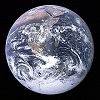8: Causes and Consequences of the Great Depression - 1920-1938
- Page ID
- 147163
- Examine how the Great Depression intensified racism in some areas and generated anti-racist movements in other regions
-
Compare how different regions were affected by the Great Depression politically and economically
- How were government responses to the Great Depression based on racial inclusion and exclusion?
- What factors allowed for liberalism to survive in the United States, Chile, and parts of Western Europe during the Great Depression?
- How did the Great Depression shake up political and social structures around the globe?
The Great Depression was the largest economic downturn of the twentieth-century and it sent shockwaves throughout the world. The United States' stock market crash sparked the depression, but it was also caused by low wages, low prices for primary products, and an unregulated financial system. Poverty levels increased dramatically, and a general sense of malaise set in as the income gap widened. Nevertheless, government responses to this economic cataclysm were quite diverse. Communism became fully institutionalized in the USSR where Stalin’s Five-Year Plans brought improving economic conditions. The USSR, however, stood in direct contrast to the economies of the other significant powers in the world, including Japan, Western Europe, and, perhaps most importantly for the global markets, the United States. For the most part, Germany, Japan, Mexico, and China embraced nationalist authoritarianism. Although Germany and Japan differed from the Soviet Union, all three regimes supported a system called totalitarianism where the government sought to control how people behaved inside and outside of their homes through fear and violence. China continued to suffer from political as well as economic instability as the Nationalists sought to stamp out the communists.
For the most part, racism became more pronounced during the 1930s even though anti-racist movements gained momentum in certain regions. While Mexico pursued a policy of industrialization and limited inclusion of racial minorities, Germany and Japan embraced an ideology known as fascism which is a form of extreme nationalism that entailed scientific racism, massive military buildup, authoritarianism, and expansion. Although democratic reformists assumed power in the USA, Chile, and much of western Europe, their policies primarily benefited white citizens and excluded people of color. Non-whites in the USA, Africa, and India were disproportionately impacted by the Great Depression and ramped up demands on their governments to address racism. In figure 8.1 Chilean Nazis attempted a coup and are shown being arrested by the government in 1938. Why did fascism take hold in some areas but not others?
.jpg?revision=1)
- 8.1: Causes of the Great Depression in Europe and the United States
- The economic impacts of World War I were felt throughout Europe. The United States was not immune from the economic consequences of the war.
- 8.2: Democratic Reformers in the Americas - A New Deal for Who?
- The US government sought to end the Great Depression through stabilization programs and worker relief. Ultimately, these policies benefited white Americans and failed to get the economy out of the depression.
- 8.3: The Popular Front Comes to the Americas - The Oligarchy Remains
- The Chilean government adopted a model of rapid industrialization during the Great Depression. Chile, however, remained economically underdeveloped and government policies did not address poverty in the countryside.
- 8.4: The Politics of Inclusion and Exclusion in the Americas - Forging the Cosmic Race
- Similar to Chile, the Mexican government pursued the policies of promoting industrialization. However, this government also promoted limited racial inclusion in its economic recovery program.
- 8.5: Africa during the Great Depression - Emerging Nationalism
- As a primary product producer, Africa was hard hit by the Great Depression. A more united and militant African independence movement took root at this time.
- 8.6: Scientific Racism - Germany
- The policies of Nazi Germany focused on a policy of massive rearmament and racial exclusion. An extreme nationalist dictatorship was established.
- 8.7: Scientific Racism - Japan
- Japan, like Germany, responded to the Great Depression with policies of scientific racism and military rearmament. The nation was preparing for nationalist expansion.
- 8.8: The Great Depression - Asia
- The Great Depression is often thought of as an event that only impacted the United States and parts of Europe. The effects of the depression were felt far more widely, including by the states within Asia.
- 8.9: Communism in the USSR and China
- The victory of the Bolsheviks in the Russian Civil War meant that Marxism-Leninism, a version of Communism promulgated by Vladimir Lenin, became the ruling doctrine of Russia, now called the Union of Soviet Socialist Republics (USSR). In time, the ideas of communism spread to other states, nowhere more successfully than China.
- 8.10: Chapter Summary and Key Terms
- The Great Depression ushered in many political, economic, and social changes. Governments devised different policies to address economic decline. These policies often were based on racial inclusion and exclusion.
Thumbnail: Cardenas with Peasants, by Jujomx, is licensed under CC BY-SA.


